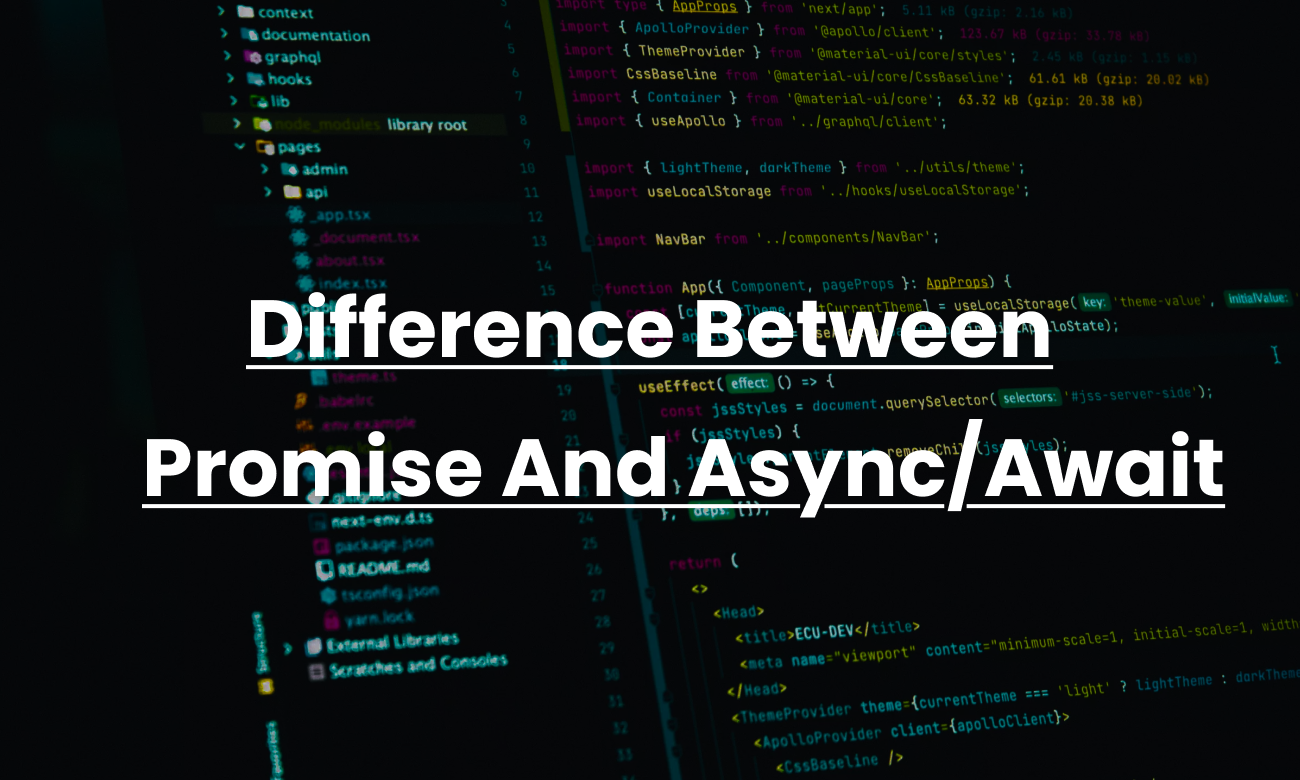Modern JavaScript development is based on asynchronous programming. Asynchronous operations are always bound to occur either when you are fetching data off a server, when you are working with APIs, or when you are engaged in complicated tasks of I/O. JavaScript provides two useful features to manage such operations: Promises and async/await.
The two are more or less functional in the same aim (handling asynchronous code), but how they operate, their readability, and error-handling code substantially differ. Knowing when to use Promise and when/why to choose to use async/await is critical in writing cleaner, easier to maintain JavaScript.
What is a promise?
A JavaScript Promise is an object that may be used to indicate the eventual success or failure of an asynchronous action. It also gives you the ability to add callbacks, which are functions to be executed at completion of the operation with a successful (.then) or failure (.catch) outcome. By using promises you can eliminate highly nested callbacks, otherwise known as the callback hell.
Here’s how a basic Promise works:
- It starts in a pending state.
- When the operation is successful, it transitions to fulfilled.
- If it fails, it moves to rejected.
What is async/await?
Async/await is a syntactic sugar added to ECMAScript in ECMAScript 2017 (ES8), which lets an otherwise asynchronous pattern have syntax that is remarkably close to the corresponding synchronous pattern. It enables developers to express more asynchronous code in a form that visually resembles and acts like synchronous code; hence, is more readable and easier to debug.
- The async keyword is added to functions to indicate they return a Promise.
- The await keyword pauses the function execution until the Promise resolves, then returns the result.
With async/await, code becomes linear and more intuitive, especially when chaining multiple asynchronous calls.
Core differences between promise and async/await
To better understand how Promise and async/await differ, let’s break it down by key aspects:
| Aspect | Promise | Async/Await |
| Syntax | Uses .then() and .catch() | Uses async and await keywords |
| Readability | Can become complex with multiple .then() chains | Looks like synchronous code; cleaner and easier to follow |
| Error Handling | Requires .catch() or second callback in .then() | Uses try/catch blocks for error handling |
| Debugging | Stack traces can be hard to follow | Easier debugging with proper stack traces |
| Chaining Multiple Calls | Nesting can occur with multiple asynchronous calls | Simple linear code, avoiding deeply nested structures |
| Browser Support | Supported in all modern browsers | Requires ES8 support (widely supported now) |
| Code Flow | Non-linear, based on callback chaining | Linear, similar to synchronous code |
| Return Value | Returns a Promise | Also returns a Promise, but behaves synchronously |
| Learning Curve | Requires understanding of chaining | Easier for beginners familiar with traditional code flow |
Examples-
Imagine you’re building a weather application that fetches temperature data from an API.
- Using promises:
You would do code to start the fetch, wait on the response, and process the response using .then(). In case of some failure, it would be an error which you would intercept using .catch(). Although this is alright, the code can become difficult to maintain when .then()s are chained together.
- Using async/await:
You can wrap your logic in async function, await your API call and deal with errors through try/catch. The code is now almost sync like in its structure, and it becomes much easier to read particularly when there are more than one asynchronous task being executed.
Why use promises?
- Convenient when you have to connect several asynchronous actions in a regulated manner.
- Good in situations where you deal with more than one outcome in a specific manner.
- Promises give more control over how and when a callback runs.
But as your code increases, the simplicity of using .then() and .catch() may not work so well because it may make the code less readable when the operations are interdependent.
Why use async/await?
- Is easier to write, read and maintain asynchronous code.
- Reduces the complexity of nested code structures.
- Perfect for sequential tasks where each step depends on the previous one.
The async/await is more up-to-date and in general use makes code easier to read and debug.
Should you choose one over the other?
Not necessarily. The point is that Async/await is developed over the Promises, and it does not substitute them, but it provides you with a newer approach to using them.
You may even combine them. As an example, you can apply async/await to some part of your app and continue using Promises in other parts, particularly in case of complex concurrent operations or generic, reusable asynchronous logic.
The key is to avoid mixing styles within the same function, as that can cause confusion and increase the risk of errors.
Conclusion
Both Promises and async/await are essential tools for managing asynchronous behavior in JavaScript. Promises are flexible and allow you control, whereas async/await are simple and easy to understand. It is a matter of the purpose you want to use it and size of the code base of which the complexity of asynchronous logic.
Practically, async/await is more contemporary as well as the favored one because it is easily readable and simple to apply. Nevertheless, it is always paramount to learn about Promises because async / await uses them internally.
Mastering both allows you to write efficient, readable, and robust asynchronous JavaScript code.
FAQs
Q1. Is async/await better than Promise?
Async/await is not superior, it is a more readable form of Promises usage. async functions continue to yield Promises at the bottomlevel.
Q2. Can I use async/await without Promises?
No. Async/await works only with Promises. They are not comaptible with traditional callbacks.
Q3. Are Promises still used in modern JavaScript?
Yes. Even though the usage of promises still remains quite popular especially in the libraries and when conducting several tasks in parallel asynchronously.
Q4. What happens if I forget to use await inside an async function?
The function continues running without waiting for the asynchronous operation to complete, which may cause unexpected behavior.
Q5. Which one is better for error handling?
Async/await is generally better for error handling using try/catch blocks, which are more intuitive than chained .catch() methods.




